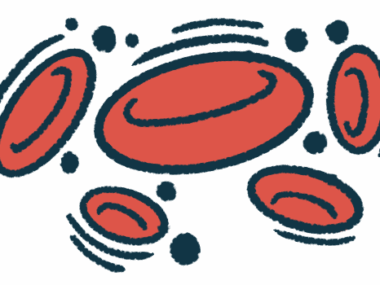Nula-cel (GPH101) Gene Therapy Phase 1/2 Trial Doses 1st Patient
CEDAR trial currently recruiting up to 15 patients with severe disease at 3 US sites
Written by |

The first patient has been dosed in a Phase 1/2 trial assessing the safety and preliminary efficacy of Graphite Bio’s experimental gene editing therapy GPH101 (now called nula-cel) in people with sickle cell disease (SCD).
The trial, called CEDAR (NCT04819841), is currently recruiting participants at three sites, in Missouri, Alabama, and California, in the U.S. Data from the study is expected next year.
“We believe nula-cel could be a definitive cure for sickle cell disease, with the potential to address all complications associated with this life-threatening disease,” Josh Lehrer, MD, Graphite Bio’s CEO, said in a press release. “We look forward to reporting initial proof-of-concept data from the CEDAR trial in mid-2023.”
SCD is caused by mutations in the gene that encodes a subunit of hemoglobin — the protein that carries oxygen in the blood — leading normally oval-shaped red blood cells to assume a sickle-like shape. Nula-cel seeks to correct these mutations, thereby restoring the production of normal hemoglobin.
“For decades, the goal of gene editing has been to precisely correct genetic mutations that cause disease. Today, we took an important step toward achieving that goal by dosing our first patient with nula-cel, the first investigational therapy designed to correct a mutated gene to normal,” Lehrer said.
“We continue to make tremendous progress with the development of nula-cel, which in preclinical studies successfully corrected the sickle cell disease mutation, directly reducing sickle hemoglobin and restoring healthy adult hemoglobin to potentially curative levels,” he added.
CEDAR is expected to enroll 15 patients, ages 12 to 40, with severe SCD. To be eligible, participants must have had at least four vaso-occlusive crises and/or at least two episodes of acute chest syndrome in the two years before study admission. The trial is not open to patients who have undergone stem cell transplants or to those who were previously treated with gene therapies.
After confirming the eligibility of patients, the researchers will collect their hematopoietic stem cells — those found in the bone marrow that can give rise to all types of blood cells. The stem cells will then be genetically modified and transplanted back into the patient.
The trial’s primary goal is to evaluate the safety of nula-cel, as well as stem cell engraftment, that is, the ability of genetically-edited cells to survive and grow after being put back in the patient’s body. Several efficacy-related measures will also be assessed, such as hemoglobin levels, and SCD complications.
The therapy was recently awarded a fast track designation by the U.S. Food and Drug Administration. Fast track status is intended to facilitate the development and review of investigational treatments for serious or life-threatening conditions that fill unmet medical needs, so that patients can have access to treatments sooner.
“This first use of high-efficiency precision DNA repair to correct a genetic mutation is an important milestone not only for our company but also for the gene editing field and, hopefully, for the sickle cell community,” Lehrer said.







